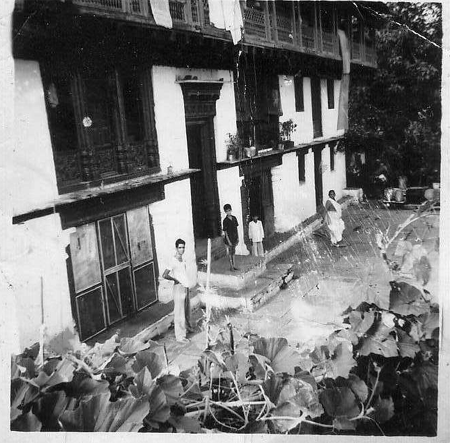Oct 17, 2025
Oct 17, 2025

12-Dec-2010
More by : V. K. Joshi (Bijji)

|
O am glad that you liked it Parth. Wish you could go. Some of the areas are really worth it and they are beckoning you. |

|
Kamal ji you are absolutely right. The British when they established the hill station, the first thing they did was to develop a drainage system. One British civil engineer had surveyed the Road to Almora via Khairna and also made a trace cutting. But he never recommended that track to be used as a regular motor road. Instead all through the longer (safer) route via ranikhet was used. Much later in the late sixtiees the present road came up and the hunch of the Britisher was proved to be right this year, when several kilometers of the new road were washed away! Likewise there are several examples. The present governments of the hill states should take lessons from the teachings of the ancient people and use a mix of modern technology with those teachings/experiences. Outcome will be more practical. Just copying the way the mountain states have developed in Europe or other countries is not going to help-because ours are the youngest mountains and like a teenager they are bubbling with energy. We must take in to account the trembling Himalayas. |

|
It is a very informative article. I agree with your assessment 100 percent. I remember as a child I used to fetch water from a spring-- and I always wondered how the water oozed out of the mountain with great pressure at that dhara nala. Little did I know that it was the mountain's way to prevent a landslide? Later I also lived in Dalhousie and Dharmshala in HP , while working for the Indian Army as an engineer. I noticed a lot of landslides , specially along the road from Pathankot-- the roads were paved and with modern drainage systems must have disabled the mountains way of avoiding devastating landslides. As much as humans suffer -- the wild life and trees suffer even more. Modern ways are good , but are cosmetic the old ways were perhaps Indian looking and did not have a European look, but they worked and avoided the massive causalities the Hills of Almora suffered . I hope Indian engineers will start paying much more heed to what their forgotten ancestors did and not go for the foolish river side living recently inspired by the disastrous European modes. Here in the US you must have seen the disasters of Katrina and many many floods that are the result of failing Engineering -- so called "Marvels". They still live in a hole in New Orleans --waiting for the next drowning of that city. I shudder to think the damage that will ensue when one of the Dams in India will burst. We must go back to the basics -- and engineering and Architecture must conform to work with Nature, as our ancestors learned to do, rather than try to tame it -- 'The western mode" !! Mother nature will always win and with a disastrous grim grin. |

|
lovely article - feel like visiting the hills everytime you write about Kumaon. |